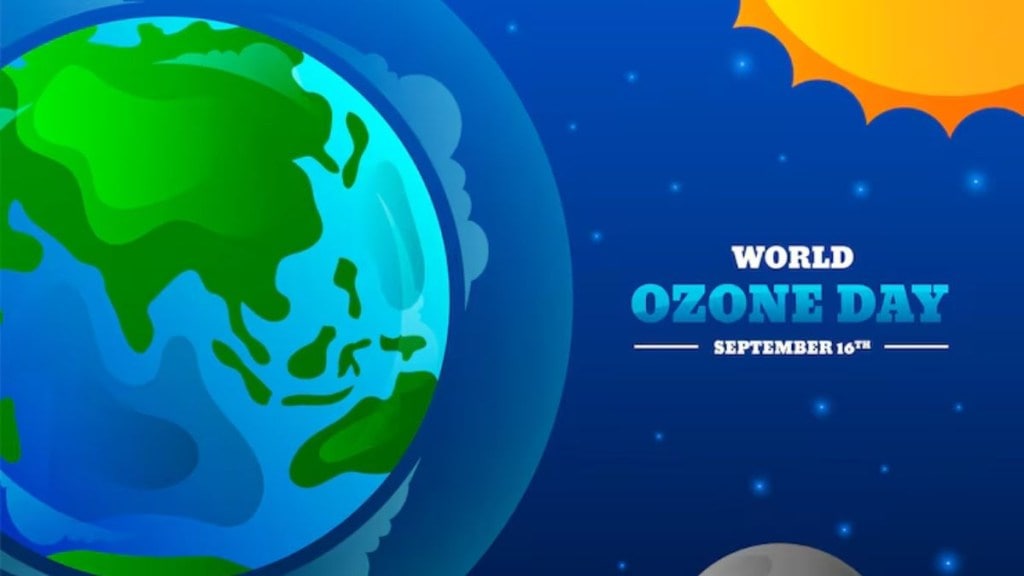We often hear the ozone layer described as the ‘umbrella’ of Earth, as it is an invisible shield that protects all living beings from the sun’s harmful ultraviolet (UV) radiation. Without it, life on our planet would face severe risks, from higher increase in skin cancer cases and cataracts to damage to crops.
But human activities, especially after the mid-20th century, began damaging this protective shield. The thinning of the ozone layer, often called the ‘ozone hole’ became a major global environmental concern. It pushed countries across the world to come together for one of the most significant international environmental agreements.
World Ozone Day 2025: Date and theme
As per the official website of the United Nations, the world will observe World Ozone Day on Tuesday, September 16, 2025. The day marks forty years of the Vienna Convention, a landmark agreement that laid the foundation for protecting the ozone layer.
The theme this year, ‘From Science to Global Action,’ focuses on how decades of research and international cooperation turned the fight against ozone depletion into a global success.
According to the United Nations, The Montreal Protocol is central to this story. Not only did it phase out CFCs and similar compounds, but with the Kigali Amendment, it also expanded its focus to reduce hydrofluorocarbons (HFCs), chemicals that do not harm ozone but are powerful greenhouse gases driving climate change.
World Ozone Day 2025: History
Concerns about ozone depletion grew in the 1970s, when scientists found out that manmade chemicals such as chlorofluorocarbons (CFCs) and halons were breaking down ozone molecules in the stratosphere. By the mid-1980s, researchers confirmed the existence of a dramatic ozone hole over Antarctica.
This discovery made countries across the globe to take action and protect the ozone layer. On March 22, 1985, 28 countries signed the Vienna Convention for the Protection of the Ozone Layer, creating a framework for global cooperation. Two years later, in September 1987, the Montreal Protocol on Substances that Deplete the Ozone Layer was adopted. This treaty united governments, scientists, and industries to gradually phase out nearly 100 harmful chemicals.
Due to these agreements, about 99 per cent of ozone-depleting compounds have been reduced worldwide. Recognising this achievement, the UN General Assembly declared September 16 as the International Day for the Preservation of the Ozone Layer in 1994.
Why is the ozone layer important?
The ozone layer is a concentrated band of ozone gas that sits in the stratosphere, around 15 to 35 kilometers above Earth. It acts as a shield, blocking most UV-B radiation from reaching the surface. Without it, humans would face far greater risks of skin cancer and eye damage, while plants and marine life would also suffer.
Even a small thinning of this layer increases UV exposure. That is why global action to protect it has been called one of the greatest environmental success stories in history.
According to the United Nations, if countries continue to follow the Protocol, the ozone layer is expected to recover to pre-1980 levels by the middle of this century.
Few international treaties have been as successful as the Montreal Protocol. Both developed and developing nations met their targets, often ahead of schedule. Harmful substances like CFCs and halons were phased out quickly, while transitional chemicals like HCFCs are on track for elimination by 2040.
This makes World Ozone Day 2025 not just an anniversary, but a celebration of what humanity can achieve when it works together. From a looming crisis in the 1980s to a healing ozone layer today, it stands as a rare environmental success story.
How is India contributing to protect ozone layer?
India is stepping up its efforts to tackle climate change by targeting potent greenhouse gases used in cooling and refrigeration. As part of its commitment under the Kigali Amendment, the country is preparing a phasedown plan for hydrofluorocarbons (HFCs), aligning with long-term climate and energy efficiency goals.
Santosh Kumar Saini, Principal Research Associate, Alliance for an Energy Efficient Economy told The Financial Express, “India, having ratified the Kigali Amendment in 2021, is actively preparing to phase down potent greenhouse gas HFCs used in air conditioning and refrigeration. The production and consumption baseline will be set between 2024 and 2026, with a freeze on production starting in 2028 and the first 10 per cent reduction due by 2032.”
He further explained that the early years are critical for strategic planning, even though actual reductions begin later. Manufacturers are increasing operations, and the government is finalising a detailed phasedown roadmap, aligned with the India Cooling Action Plan.







